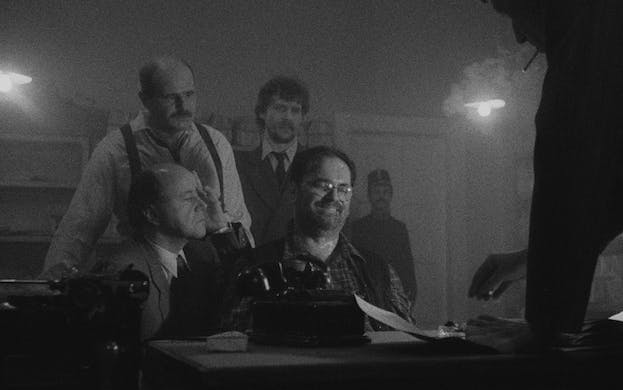Think Film Noir, Not Tween Vampires, as ‘Twilight’ Arrives at Film at Lincoln Center
This ‘Twilight’ is only nominally a tale of murder, deceit, and intrigue. It’s more a 100-minute tone poem that just happens to have at its center a solitary Joe of gruff demeanor and signature trenchcoat.

An outburst from a member of the audience watching “Twilight” let the rest of us know that he felt it was “indulgent.” No, he wasn’t reacting to the films populated by tween vampires and werewolves and Kristin Stewart, oh my, but rather to the 1990 picture from Hungarian director György Fehér. The movie hadn’t been rolling for five minutes when the critical summation was handed down — and, you know, it’s not altogether wrong.
A revival of “Twilight” is being hosted by Film at Lincoln Center in a new 4K restoration overseen by the National Film Institute of Hungary and the Hungary Film Archive & Film Lab. The process was overseen by Miklós Gurbán, the original cinematographer for the picture, and he’s a stickler for quality: Mr. Gurbán’s efforts on the film are among its chief assets. The picture’s coarsely grained atmosphere is the bait by which cineastes will be drawn. There are few black-and-white films quite as severe or as sumptuous.
The film is an adaptation of “Pledge,” a 1958 novella by Swiss dramatist Friedrich Dürrenmatt. The playwright didn’t think much of detective fiction, but Dürrenmatt did stoop to writing crime stories in order to pay the bills and, imagine that, they proved successful. Still, these efforts rankled his artistic yearnings. Genre requirements were too constricting for a man of Dürrenmatt’s temperament.
Film at Lincoln Center notes that “Twilight” is loosely based on the Dürrenmatt book. Is it reading too much into things to wonder if the author’s estrangement permeates the film? Fehér did most of his work for Hungarian television, his only other feature being “Passion” (1998), an adaptation of James M. Cain’s “The Postman Always Rings Twice.” One wants to speculate that film noir was Fehér’s go-to in terms of storylines and passions, but “Twilight” is only nominally a tale of murder, deceit, and intrigue. It’s more a 100-minute tone poem that just happens to have at its center a solitary Joe of gruff demeanor and signature trenchcoat.
The film begins with a trawling aerial view of a dense forest that, after a notable expanse of time, begins yielding to open spaces. A doomy whoosh of synthesized sound serves as backdrop. Soon we’re inside a dark car with two huddled figures discussing a murder that’s taken place: the body of an 8-year-old girl has been discovered at the forest’s edge. One man leaves the car; the other man does the same. We watch them walk up a hill. From afar, we see a cadre of silhouetted men circled around the corpse. Then we see the two original men — “Twilight” isn’t big on names — descend the hill.
The camera tracks all of this and everything else as if it had all the time in the world. The effect can be magisterial, as sundry scenes unfurl moving with gradual surcease, usually from right to left and seen at a distance. With its enveloping sense of existential fatigue, “Twilight” is Dashiell Hammett as imagined by some combination of Caspar David Friedrich, Mark Rothko, and Carl Dreyer. The story meanders through a disconnected haze of pedophiles, hard-boiled cops, and rickety shacks ensconced on the highway.
The picture doesn’t end so much as stop, narrative resolution being much too concrete for this exercise in mood and endurance. So, yes, indulgent it most certainly is: Those skeptical of art house cinema should vote with their backsides and stay at home on their sofas. Yet for audiences who favor sensation over story and ambience over drama, a night out at the movies might be just the ticket. “Twilight” has its begrudging rewards.

